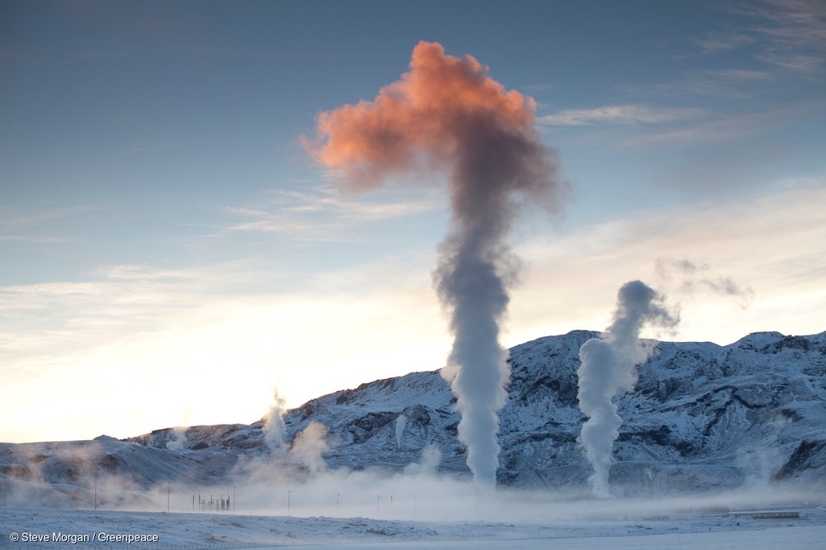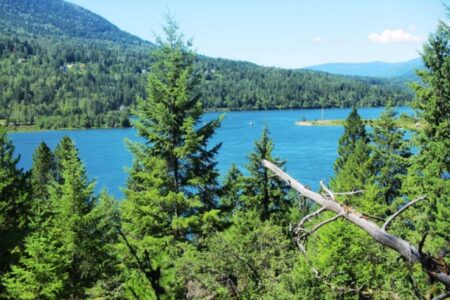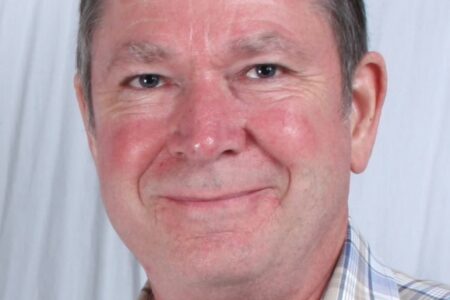Opinion: If Saskatchewan Can Build a Geothermal Plant, Why Can't BC?
By Carol Linnett. This article is from DeSmog Canada.
While news of Saskatchewan’s plan for a small geothermal power plant was met with excitement by renewable energy advocates, experts say British Columbia is far better situated to capitalize on the technology yet has failed to do so.
“It should be a little bit of a shock that a less good resource is being developed in Saskatchewan over a world-class resource in B.C.,” said Alison Thompson, chair and co-founder of the Canadian Geothermal Energy Association (CanGEA).
B.C. is located on the Pacific Ring of Fire, a geothermal hot zone. Maps produced by CanGEA found B.C. has enough geothermal potential to power the entire province.
“There are geothermal projects all up the coast but they stop at the border. There’s nothing in B.C.,” Thompson said.
“This is clearly not technical, not economic. This is policy driven.”
Northeastern B.C., a hotbed of oil and gas drilling, is home to one of the hottest recorded wells in Canada, measured at around 170 degrees Celsius. Aquifer temperatures in Saskatchewan’s Williston Basin are recorded at around 120 degrees.
“You only need about 80 degrees for power,” Thompson said.
Project developers in Saskatchewan signed the first Power Purchase Agreement (PPA) for geothermal in Canada with the province’s utility provider, SaskPower.
The same has not been possible in B.C., where a primary focus on hydro development, most pronounced in the recent decision to build the controversial $9 billion Site C dam, has taken up the lion’s share of the the provincial utility provider’s attention.
In 1983 the B.C. Utilities Commission recommended the province to explore geothermal as a potential alternative to Site C. As the Site C Joint Review Panel noted in its final report on the project, the province put virtually no effort into exploring alternatives.
“If the senior governments were doing their job, there would be no need for this recommendation” to explore alternatives, the panel wrote in its final report on Site C in 2014. “The low level of effort is surprising, especially if it results in a plan that involves large and possibly avoidable environmental and social costs.”
Critics argue Site C has actually forced out renewable energy industries like wind and solar.
“At CanGEA, we’re in our 11th year and we’ve been advocating consistently for geothermal in B.C. with no results with B.C. Hydro and the Ministry of Energy,” Thompson said.
The West Moberly First Nation, which is fighting Site C in court, has also advocated for geothermal to no avail.
“If Saskatchewan can build a geothermal plant, why the hell isn’t B.C.? Especially when they know there’s geothermal potential here. We’ve asked to partner with them on it,” Chief Roland Willson told DeSmog Canada.
BC Hydro’s Mandate needs an update, says Andrew Weaver
B.C. Green Party Leader Andrew Weaver told DeSmog Canada geothermal is long overdue in B.C. but that “B.C. Hydro’s mandate needs to be massaged, be changed a bit.”
“The problem with geothermal in the province is not that we can’t do it,” Weaver said. “The problem is B.C. Hydro is the only buyer of power so no one is going to invest the capital in a project if there’s no buyer for the electricity.”
He added: “We have enormous potential for geothermal — it’s stable, base power that’s renewable and it will happen in B.C. sooner than we think.”
Steve Grasby, geoscientist with Natural Resource Canada’s Geological Survey, said in the 15 years he’s been researching Canada’s geothermal potential he has seen a massive shift in public awareness and interest.
A 2013 Geological Survey of Canada report found northeast B.C. has the “highest potential for immediate development of geothermal energy” anywhere in the country.
“When we first started this most people didn’t even know the term and if they heard it they didn’t know what it meant,” Grasby told DeSmog Canada.
“There has been a huge increase in awareness on all different levels. Now we’re seeing a lot of growing industry interest with small companies and people exploring this new opportunity.”
He added test drilling has yet to be completed in Saskatchewan, so it could be some time before more detailed knowledge of that resource comes to light.
Grasby said there is “tremendous” geothermal potential across Canada but the highest temperature regions are in B.C.
“That’s where we really have the potential to consider electrical generation compared to just direct heat. There’s been a lot of interest and various projects pushing forward. It’s an exciting time.”
BC Policy Indifference to Geothermal Hurt Industry
In Valemount, B.C., plans for a geothermal ecovillage are underway. If successful, the plan will not only produce electricity but also provide direct heat for the community, recreational hot springs, year round greenhouses and a first-in-Canada geothermal brewery.
It took several years for the company behind the project, Borealis Geopower, to land a drilling permit.
Thompson, who’s also a principal at Borealis, said the regulatory system is slow, full of setbacks and plagued by what she considers chronic indifference.
Policy in B.C. hasn’t kept pace with advancements in the geothermal field, she said.
“For example, B.C. Hydro only thinks about electricity and there isn’t a utility provider in B.C. that thinks about heat. Geothermal can give you electricity, it can give you heat and it can even be a source of precious minerals that don’t have to be open pit mined. It provides jobs and carbon credits.”
Borealis is now awaiting a land access permit for the drilling pad from the Ministry of Forests, Lands and Natural Resource Operations.
Thompson said the permit is stuck in suspension as B.C.’s political landscape remains uncertain.
“If this was oil and gas permitting it would be done in weeks. With geothermal, this is rolling out in the months and years,” she said.
Korie Marshall from the Valemount Geothermal Society said some of the lag time can be considered the hazards of trailblazing.
“It’s not always fun to be first. We’ve been coming up against all these roadblocks that no one understands. We want to help fix that for others coming up.”
“A big part of our goal as a society is not to just get this going in Valemount but to show the rest of Canada that we can do it.”
Geothermal Energy a Part of Community Building
Meanwhile, geothermal companies are chomping at the bit to get to work in B.C.
“At StromTech we’re actively engaged with clients in northeastern B.C., in the Peace River region, to explore geothermal. There’s lots of good opportunity up there,” said Ben Lee, engineer and geothermal consultant with StromTech Energy Services.
StromTech is in the preliminary stages of conducting a feasibility study for a community led geothermal project with the West Moberly First Nation.
Lee said smaller communities stand to benefit from local geothermal projects, especially where heat from geothermal projects can be used to prop up other industries and jobs.
“The fact that we can generate electricity and generate heat in sustainable, renewable manner — that’s sometimes overlooked or glossed over,” Lee said.
Lee said northern communities concerned about food security are especially interested in the co-generation of electricity and direct heat from geothermal.
“The ability to grow food and produce that for themselves, reduce their reliance on imported food whether that be from the Okanagan or southern B.C. or California, that’s of interest to remote communities.”
“Where I see an opportunity for government, for B.C. Hydro to make a difference is in supporting localized, distributed generation.”
By Carol Linnitt. Article from DeSmog Canada.



























Comments